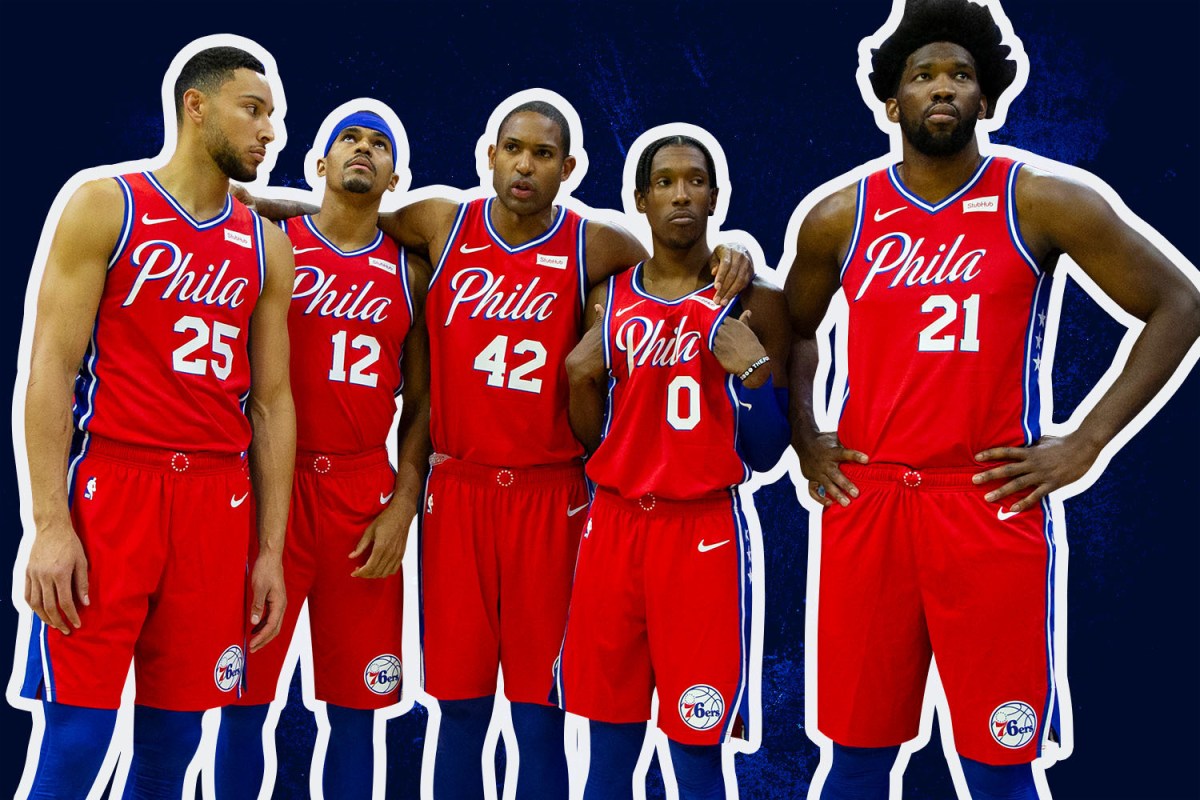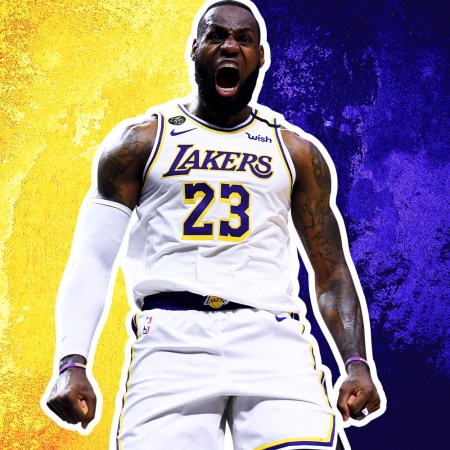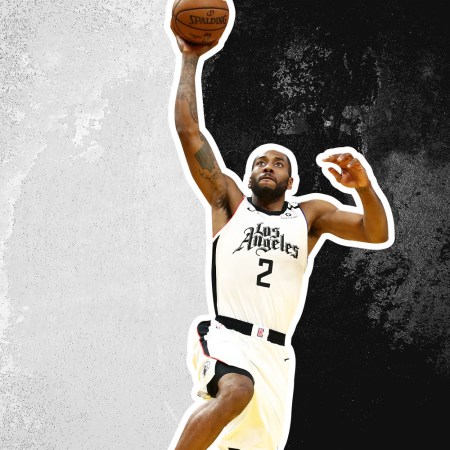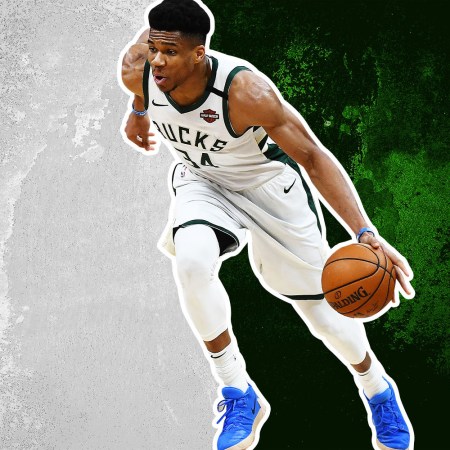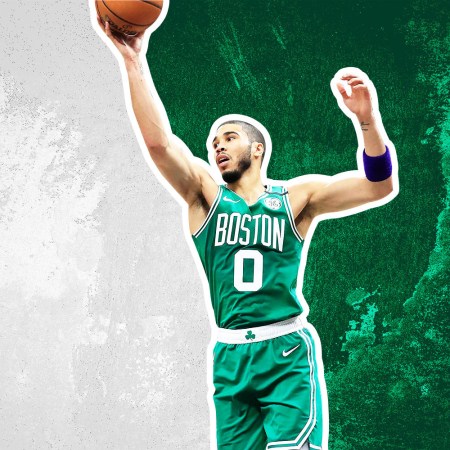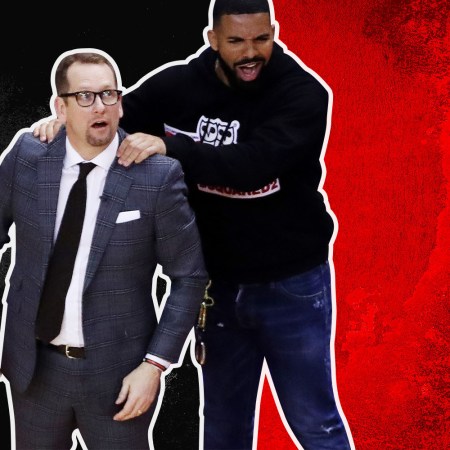Over the next three weeks, we’ll be preparing for the NBA’s long-awaited restart by attempting to answer the single most important question facing every franchise that will be present and accounted for in Orlando. This is 22 Questions.
At the very least, you have to respect the Philadelphia 76ers’ commitment to getting weird. Over the last seven seasons, they’ve cycled through three general managers, all of whom carried the off-putting quirkiness of an It’s Always Sunny in Philadelphia side character. First there was Sam Hinkie, the dork messiah who birthed The Process, a genius plan to rebuild the franchise through, uh, endless intentional losing and Excel shortcuts. Then came Bryan Colangelo, a trust-fund baby who got axed after he was caught manning an army of burner Twitter accounts dedicated to defending his giant, wrinkly brain and normal-size, unwrinkled collars. Now they’ve got Elton Brand, a former Sixer who surveyed the landscape of the modern NBA and decided that the pinch post would be his team’s shared Eden.
Last year, Brand short-circuited The Process, emptying the Sixers’ cache of draft picks to acquire Jimmy Butler and Tobias Harris. The result? A misshapen, ill-formed juggernaut. The fit was awkward, but Butler supplied enough shot-creating juice that the Sixers could pummel teams while still retaining some semblance of a perimeter game. Only the four most important doinks in sports history separated the Sixers from a probable title. But alas, over the summer Jimmy Butler cut his stay in Philadelphia even shorter than the hem of his shirt and bolted for Miami while JJ Reddick signed with the New Orleans Pelicans; in their stead came Josh Richardson and Al Horford, a 35-year-old big man who they lavished with a four-year, $109 million contract. Despite being felled by their lack of perimeter imagination or dynamism, Brand decided that the best way to power forward was through … power forwards.
For much of this season, the Sixers have started Ben Simmons, Josh Richardson, Tobias Harris, Al Horford and Joel Embiid. Every other team in the NBA focused on getting smaller and faster; the Sixers’ most commonly used lineup consisted of a small forward (Richardson), two power forwards (Harris and Simmons) and two centers (Horford and Embiid).
It hasn’t worked. While Simmons, Embiid and Horford are all immensely talented players on their own, all three of them like to occupy the same spots on the floor. This trio had no pace and no space, just a conga line of very tall, very confused guys spanning the length of the paint. In turn, Harris and Richardson were forced to push the outermost edge of their game, over-extending themselves to function as the ball-handlers that the team desperately needed. No member of the team’s expensive, vaunted starting lineup team could reliably create their own shot in the half-court, which was only further compounded by the fact that none of them could create shots for their teammates in the half-court either. Lineups featuring all three of Simmons, Embiid and Horford played with all the panache of someone trying to zip up a too-full suitcase, stumbling to a 101.8 offensive rating and a -.90 net rating in the process. On the whole, the Sixers’ shot profile was the fifth least efficient in the whole NBA.
Now, Philadelphia has hope; hope, thy name is Shake Milton.
Going into the season’s restart next week, the Sixers have pulled the plug on their large-ball experiment. Shake Milton, a 6’5 sophomore combo guard, will take Horford’s spot in the starting lineup. Ben Simmons, at long fucking last, will play power forward. Milton may not be a better player in a vacuum than Horford, but he unclogs the Sixers offense. The pick-and-roll is a staple of modern offense, but one that the Sixers have ignored almost entirely. According to Synergy Sports, the Sixers ran the third-fewest pick-and-rolls of any team in the NBA and the reason was clear: they stunk at it. Milton, though, should allow the Sixers to be basic. He’s the only Sixer who can actually pressure defenses in a pick-and-roll, forcing defenders to chase him over the screen and deny him the space to launch an open jumper. Even if Milton can’t sustain his 45.3% shooting from deep, the threat of his shot manufactures advantages that were previously unavailable to the Sixers. To wit, Milton is still big for a guard, ensuring that the Sixers can still use their albatross wingspans to swallow opposing offenses whole.
Most of all, Milton lets the rest of the Sixers’ lineup start to make sense, theoretiecally at least. Embiid will have even more space to dole out punishment in the post, having already averaged more points in the post per game than any other team when he was crammed in the middle seat between two other big men. If defenses couldn’t stop him when they were wantonly double- and triple-teaming him, they certainly won’t be able to now. Similarly, Harris will have more room to manifest his offensive versatility, while Richardson can once again devote himself to making spot-up threes.
The real story is Ben Simmons. To be sure, Simmons will still get to handle the ball and do Ben Simmons-y things, his transition rampages now aided by Milton sprinting down the wings and spacing the floor rather than Horford trailing behind the play with the urgency and velocity of a tugboat. Moreover, Simmons will now be a weapon for the Sixers rather than have his lack of shooting be weaponized against them. Because Simmons can’t and won’t shoot, his sole plan of attack in the half-court has been to dribble really, really aggressively into the paint and hope something good happens. The problem: in the playoffs, good things have rarely happened. Alongside a true point guard, Simmons will have more options. He can lurk in the dunker spot along the baseline for dump-offs; he can act as the screener in the pick-and-roll, either carving apart defenses when he receives the ball on short-rolls or ooping alleys; he can call for Milton to set him a screen, scrambling the brains of defenders who are used to the inverse; he can even shoot threes, which he pinkie-promises he’ll do now (he won’t). Ultimately, Simmons will be the same very good player he’s always been, but he’ll have fewer hindrances in doing so.
It’s probably premature to anoint Shake Milton, who’s played 52 games in his entire NBA career, the team’s savior before the Sixers’ new starting lineup has played even one minute together. But he represents progress nonetheless. All year long, the Sixers have underachieved relative to their talent level, stumbling to sixth seed in the East with a 39-26 record. There are still the bones of a great team in here, but it’ll require a recalibrating of the team’s priorities. Trying to dominate through size and snarling defense is admirable, but impractical if you can’t score. The Sixers tried to fist-fight math by playing the five heftiest men they could find and lost. Even if Shake Milton can’t cure this broken team, he’s a step in the right direction. Success won’t be measured in results — this team probably isn’t a legitimate contender unless they make more substantive changes, anyway — so the Sixers, as they’ve done for years, should just trust their process.
Whether you’re looking to get into shape, or just get out of a funk, The Charge has got you covered. Sign up for our new wellness newsletter today.
